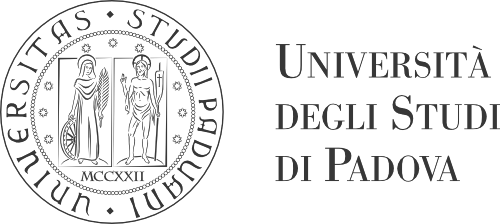Second Level Degree in Mathematics
Jump second level menu- Courses
- Timetable
- Exams
- Individual study program
- Student seminars
- Thesis
- Thesis Archive
- Graduation dates
- Contacts
DYNAMIC SISTEMS - 7 CFU
Teacher
Francesco Fasso'
Scheduled Period
I Year - 2 Semester | 02/03/2020 - 12/06/2020
Hours: 56 (24 esercitazione, 32 lezione)
Prerequisites
1. Basic knowledge of the theory of ordinary differential equations (ODEs) and of the qualitative theory of ODEs, at the level of, e.g., the course "Fisica Matematica" which is offered as a a mandatory course at the second year of the Corso di Laurea in Matematica in this University.
2. A basic knowledge of the programming language "Mathematica" (at the level of the tutorials periodically offered by the CCS and available on the YouTube channel of the Department of Mathematics) is useful, as it will be used in the mumerical part of the course.
Target skills and knowledge
This course provides an introduction to the theory of Differentiable Dynamical Systems---particularly, continuous Dynamical systems (namely ODEs), but also discrete Dynamical Systems (iterations of maps). The first part of the course provides a panoramic of classical results on ODEs, including periodic orbits, Poincare' maps, local classifications, stable and center manifolds, etc. Subsequently,the course will focus on the difference between integrability and chaoticity (in the hyperbolic context). The course is completed by a numerical laboratory part, which is devoted to the numerical investigation of ODEs and to the numerical analysis of dynamical systems.
The student will reach an advanced knowledge of the above topics in the theory of differentiable dynamical systems and basic competences and skills on the numerical investigations of dynamical systems.
Examination methods
Oral examination on the topics studied in the course, and with an evaluation and a discussion of the numerical assignments (which will be assigned during the course). Students will prepare the numerical assignments by working either alone or (recommended) in pairs, at their choice. During the examination, students may also be asked to solve some simple exercies.
This examination format allows to evaluate: 1) The level of the theoretical knowledge of the matter reached by the student. 2) The level of the mathematical comprehension of the matter reached by the student. 3) The abilities reached by the student in the numerical investigation of dynamical systems, and in particular in the analysis and comprehension of the numerical results.
Assessment criteria
Knowledge of the subject, level of the mathematical comprehension, quality of the numerical work, and the abaility to analyze and interpret the numerical results within the theoretical framework developed in the course.
Course contents
1. Continuous (ODEs, flows) and discrete (iteration of maps) Dynamical Systems. Linearization, variational equation. Linear dynamical systems; stabel, unstable and center subspace.
2. Periodic orbits: Poincare' map; stability; monodromy matrix. Applications.
3. Hyperbolic fixed points: Grobman-Hartman theorem, stable manifold theorem.
4. Integrability. Invariance of an ODE under a group action, reduction. Dynamical symmetries. Bogoyavlenskij's integrability theorem. Application to Hamiltonian systems.
5. Hyperbolic systems and homoclinic phenomena; Smale horseshoe; symbolic dynamics; Melnikov integral; shadowing.
6. Lyapunov exponents.
7. Numerical esperiments on ODEs.
Planned learning activities and teaching methods
Frontal lectures. Lectures in numerical Laboratory. Individual or (recommended) collaborative works on numerical assignments.
Additional notes about suggested reading
For the prerequisites on the qualitative theory of ODEs see e.g.
1. V.I. Arnold, Equazioni Differenziali Ordianrie (MIR, 1979)
2. M.W. Hirsh e S. Smale, Differential equations, dynamical systems, and linear algebra (Academic Press, 1974)
3. F. Fasso`, Primo sguardo ai sistemi dinamici. CLEUP
The program is covered in lectures notes written by the teacher and distributed during the course and by
4. G. Benettin, "Introduzione ai sistemi dinamici-Cap. 2: Introduzione ai Sistemi Dinamici Iperbolici" (http://www.math.unipd.it/~benettin/)
Reference material includes:
5. E. Zhender, Lectures on Dynamical Systems (EMS, 2010)
6. C. Chicone, Ordinary Differential Equations with Application (II ed), Springer.
The numerical work in the laboratory uses the language Mathematica; a basic knowledge of Mathematica is advised. A tutorial in two parts is downloadable from the Dipartimento di Matematica's YouTube channel:
https://www.youtube.com/watch?v=JfRzv6r0wqM
https://www.youtube.com/watch?v=tUuwgiGipfw

